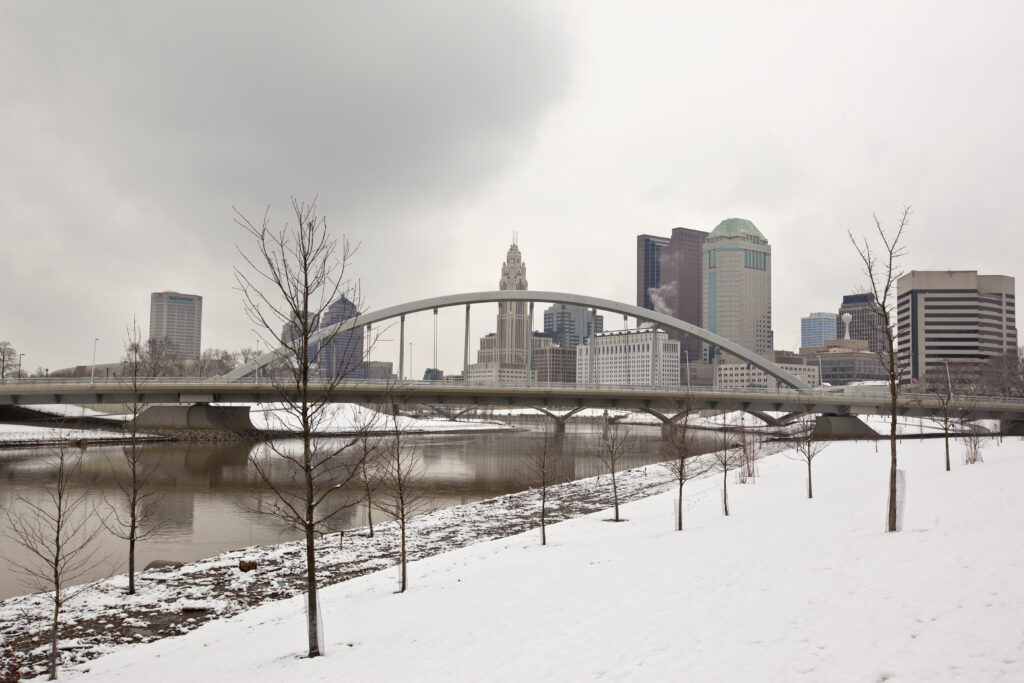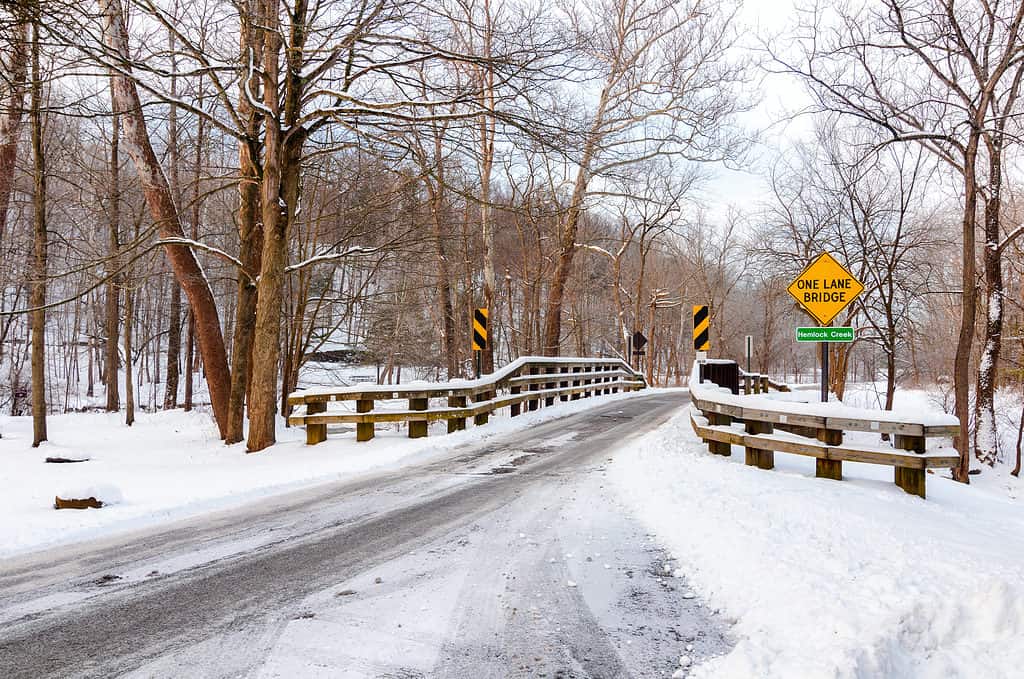Ohio has four distinct seasons, including hot summers and very cold winters. Precipitation is common year-round in the state, including snow during the winter and early spring. Chardon, Ohio is the snowiest place in the state, receiving an average annual snowfall of 107 inches. The most populated cities in the state average between 20 and 30 inches of snow each year. Learn more about the snow levels in Ohio, including what a typical winter looks like for the state.
How Cold is Ohio Winters?

The coldest time of the year in Ohio is from the end of December until the beginning of March.
©iStock.com/aceshot
Ohio winter temperatures can be unpredictable. One year might be cold yet mild, while the next year might bring brutal, record-low temperatures. Decembers are typically cold and breezy, with average daily highs in the low 40s and lows in the upper 20s. In areas like Columbus, any given day carries more than a 30% chance of rain or snow. January is freezing and windy, with day temperatures ranging between 19 degrees and 34 degrees Fahrenheit. February is much of the same with average temps ranging between 21 and 37 degrees.
The coldest time of the year in Ohio is from the end of December until the beginning of March. Plan for thick winter clothes and school shutdowns several times throughout the year. You will also need plenty of time in the morning to thaw out your car and deice the windshield before heading out.
What is a Typical Winter Like in Ohio?
The typical winter in Ohio is very cold, snowy, and windy. The state has a humid continental climate and moderate precipitation, which is relatively consistent throughout the year. However, temperatures and the amount of snow can be inconsistent from year to year. Some years may be mild without a ton of snowfall, while others are frigid with abundant snowfall. The cold season in Ohio runs from December to the beginning of March and features an average daily high of 46 degrees Fahrenheit.
Ohio’s cloudy season begins in early November and lasts until early summer. The cloudiest month of the year is January when the sky is overcast more than 60% of the time. Ohio can see snow as early as November, but it doesn’t pick up until December. January and February are the snowiest months of the year. There is a chance of snow until mid to late March.
Does Ohio Get a Lot of Snow?

January is the coldest month of the year in Ohio and the second snowiest month.
©Kenneth Sponsler/Shutterstock.com
The snowy season in Ohio lasts for about three and a half months, beginning in early December and lasting until mid to late March. February is the snowiest month of the year in the state. Columbus, for example, receives an average February snowfall of 2.9 inches. Rainfall can also occur any month of the year. However, February is the least rainy month and May is the wettest.
The amount of snow strictly depends on the location. Columbus gets an average of 30 inches of snow during the winter season, while Dayton and Cincinnati get between 20 and 30 inches. Meanwhile, Cleveland gets an average of nearly 64 inches throughout the year due to its position on Lake Erie.
What is the Coldest Month in Ohio?
January is the coldest month of the year in Ohio and the second snowiest. January has an average high of 30 degrees Fahrenheit. It is also the windiest time of the year, with most days averaging eight miles per hour.
January can get as warm as 40 degrees and as low as the low 20s. However, it’s not uncommon for temperatures to drop below zero or even climb into the 70s.
Canfield is the coldest place in Ohio, with average January temperatures of just 17 degrees.
What Are the Predicted Snow Levels in Ohio for 2023-2024?

With El Nino in place this winter, Ohio is expected to have weather more like the Carolinas this year.
©Coral Sand and Assoc/Shutterstock.com
The average snow level in Ohio depends on the location within the state.
Here are a few examples of average annual snowfall totals:
- Akron – 47.2 inches
- Toledo – 37.4 inches
- Youngstown – 67.8 inches
- Cincinnati – 23.3 inches
- Columbus – 28.2 inches
- Dayton – 12.3 inches
With El Nino in place this winter, Ohio is expected to have weather more like the Carolinas this year. The National Oceanic and Atmospheric Administration predicts a milder season, especially in the central and northern regions, where residents can expect up to 50% warmer temperatures than the previous winter. Winter will most likely be drier for the 2023 to 2024 season, but you may see more rain than snow flurries.
What Was the Worst Winter Ever in Ohio?
The worst winter in Ohio’s history occurred in 1978. Late January of this year experienced The Great Blizzard of 1978, one of the most severe blizzards in America’s history.
However, the winter of 2004 to 2005 was the snowiest on record, with places like Cleveland amassing nearly 120 inches!
The photo featured at the top of this post is © Kenneth Sponsler/Shutterstock.com
Thank you for reading! Have some feedback for us? Contact the AZ Animals editorial team.






